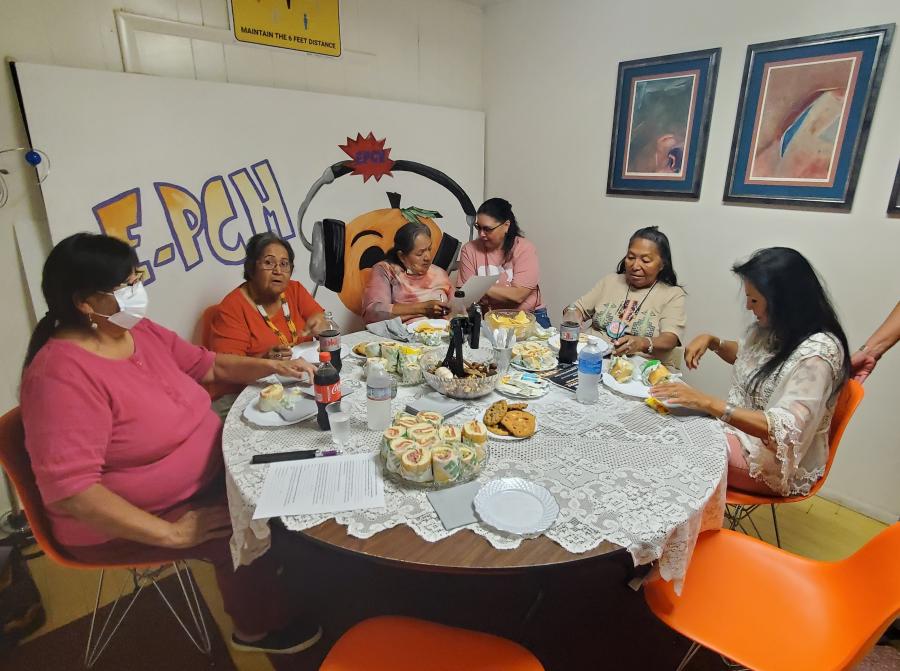ONE SMALL TOWN FOR SALE, FULLY OCCUPIED, proclaimed a headline in The New York Times classified section one fall Sunday in 1976. This description of the village of Corbett followed:
130 wild acres; a cluster of 30-odd white frame houses, an abandoned schoolhouse whose black iron bell still hangs in the belfry cocked at an angle as if waiting to peal out a last ring; an abandoned general store with a Canada Dry sign on the door reading, "Glad You Stopped, Come Again"; an old horse barn with a blacksmith shop right next to it; and alongside the road, traces of the old rail bed where the trains of the Delaware and Northern Railroad used to roll when Corbett was a prospering acid factory town and a good place to live.(1)
Corbett was founded in 1912 by the Corbett & Stuart Company. The purpose of this mountain settlement was to house workers and the huge kilns needed to boil-down hardwood logs from the Catskill Mountains into charcoal and a variety of by-products such as acetate. Trees were chopped in the mountains, then drawn by horses to the kilns to be burned. Although there were only a limited number of jobs inside the factory, a large number of wood choppers were required. In Corbett this was usually single men who were relatively transient, most of whom were recent immigrants - Italians, Poles, Czechs and Russians.
Like the farmers who preceded acid factories to the Catskills by half a century, those who made their homes in Corbett remarked on the beauty of the amazing mountains surrounding their settlement. A distinctive bluish haze and sheer vertical mass dominated the visual landscape, and as one old man told a Catskill historian: "The trouble with the Catskills is they got too much land. Had to set it all on edge before they could put it on the map."
With the invention of synthetic acetate following World War I, the acid factory industry was obsolete. The factory shut down in 1934 and Corbett lost its entire economic base. Most residents, however, continued to live there, paying rent to the company heirs who continued as their landlord. Over the years, the village gained a reputation of being "anti-social" - a place where individuals and families were constantly bickering.
Finally, in 1976, the Stuart family was forced to sell Corbett. Several prospective purchasers had ideas for the town, but not one would accommodate Corbett's 170 residents, some of whom had lived in the community since birth.
At this point the residents joined forces with a nonprofit development group called the Rensselaerville Institute and a renewal program was born. A new water system was installed, and houses were fixed up and purchased by residents. These projects were done on a volunteer basis and costs were very low.
But the real point of the Corbett project has not been physical renewal as much as cultural restoration. As the Corbett project started, it was clear that not enough outside resources could be captured to subsidize improvements in conventional ways. If Corbett residents wanted fresh water and fixed-up housing, they would have to do it for themselves.
Given the bickering and feuding that had occurred over years, collective action would not seem a readily available solution. Yet, it was Corbett's residents who first came to the notion underlying the renewal program used in this mountain village.
At one evening meeting, a woman of the village inspired her fellow residents and a staff person from The Rensselaerville Institute with the idea that those present were like passengers on the ship Mayflower. She reflected that the pilgrims had signed some kind of document prior to landing in the New World, and from this memory came the Corbett Compact, a document developed by residents to state the commitments needed to make renewal happen.
The Compact began not with a workplan, but with a vision of what Corbett should be:
We, the members of the Village of Corbett and The Institute on Man and Science(2) set forth on an adventure which requires our full cooperation and commitment. Like the passengers on the ship Mayflower we herewith draft and sign this compact setting forth some articles of common faith and agreement.
In so doing, we give our pledge to rebuild Corbett as a small community in which people help each other...in which we can get a good night's sleep...in which our children can range safely...in which we can feel good about our town, our neighbors, and ourselves...in which we do not waste.
At the same time we seek a community in which people live and let live, respecting the rights of others to be different. We want people to grow. Some will grow and stay. Others will grow and leave. But for all of us, Corbett may always be home.(3)
The residents soon came to recognize that the future they desired and had thus chartered for Corbett was in many ways a rediscovery of its past.
The Compact went on to spell out responsibilities. Some were physical - such as agreement by resident households to contribute three hours per week per household to renewal activities. Other provisions had to do with the fabric of community life. For example, a provision on communication states:
Both The Institute and residents agree to tell the truth as we know it when talking or writing about project events. In particular, we will check out rumors with the source before repeating them.
And a section on leadership says:
We agree to support the idea of resident leadership whether we like a particular individual who is a leader at a given moment or not. We encourage leaders, not knock them down.
Before the Corbett compact could deal with matters internal to the village, it had to define the relationship between the residents and its external partner, The Rensselaerville Institute. The key became mutual respect of rights, by which residents agreed to participate in efforts to document the project, while The Institute agreed not to violate privacies. According to the Compact: "The Institute agrees that no questions should be asked of residents which residents cannot ask of Institute people." If a researcher wanted to know the income or personal feelings of a resident, that resident had the right to ask the researcher to answer the same questions! In this manner, the Compact provided an answer to the difficult problems of intervention.
When drafted, the Compact was hand lettered on newsprint and signed at a community supper. For the following five years, it became the law of this land and made a remarkably strong contribution to holding the village together during thousands of hours of contributed labor.
The Compact proved to be a constitution which began by recognizing that this unincorporated village was constitutionally different from most communities in the United States. For example, the Compact specified principles of direct rather than representative democracy with citizen input measured not by meeting attendance but by hours of work. It enfranchised through vote persons 10 years of age and older, based on the premise that if youths were asked to work, they should also have the right to help make decisions.
History of the Covenant
In New England, the small town in America found its original classic form, in large measure, due to the puritan imprint of the church covenant. The covenant was not only a solemn pledge of consent and obligation, but also a specific agreement in which individuals stated their expectations and signed their names. Historian Page Smith has stressed the importance of the covenant by noting:
Without the matrix of the covenant in community, the colonists would simply form collectives, that is, they would have divided up into units of individuals grouped within certain physical areas, directed by external powers and shaped largely by circumstances.(4)
Before its Compact, Corbett was a good fit to Dr. Smith's prognosis. It was a collection of individuals certainly dependent on an external power and shaped by circumstance (the need for the arbitrary sale of the village by the owners). The Compact was clearly and intentionally designed to move the village from that state to a place where shared bonds could preserve it from disintegration, and in that sense, the Corbett Compact was a covenant.
To accomplish the installation of a complete water system by volunteers, individuals had to come forth to work not for a personal but rather for a shared or public good. This in turn implied that there was a core of the community that went beyond personal interest.
Many scholars in the United States believe that the small town is no longer a distinctive indigenous culture. Their view is that even remote and very poor areas such as Corbett are simply representations of the mass society. The Corbett Compact goes against that grain, calling attention to the indigenous qualities of a mountain settlement.
In the long run, the power of geography and probably of isolation simply proves strong enough to revive behavior, attitudes, beliefs and feelings that the mass media and other "cultural universals" of a modern industrial nation have seemed to eclipse.
Notes:
(1) New York Times. Sunday, September 12, 1976.
(2) At the time of the compact, the Rensselaerville Institute was called The Institute on Man and Science.
(3) The Corbett Compact. This and other citations to the document come from the compact, which is reprinted in "The Corbett Compact" in Small Town. January/February, 1980.
(4) Page Smith, As a City Upon A Hill - The Town in American History. MIT Press, 1966, p. 14.
Article copyright Cultural Survival, Inc.



